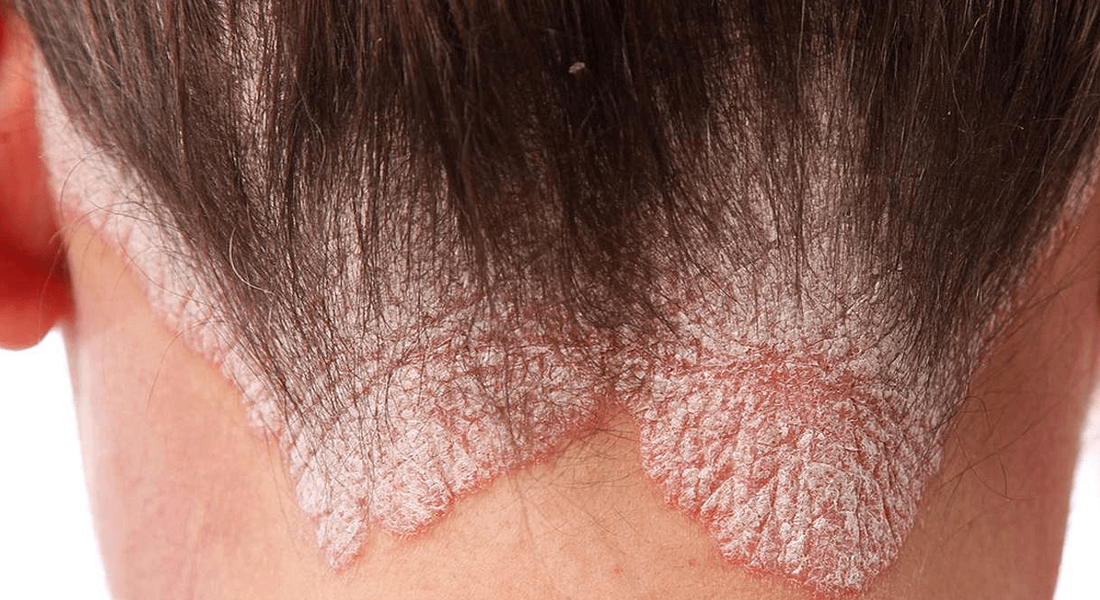Understanding Psoriasis: Symptoms and Treatment Options
By:
Kevin Chong
On
31/10/2024Reading time:
5 min
Summary:
Psoriasis is a chronic autoimmune skin condition that affects millions of people worldwide. It causes skin cells to multiply faster than normal, leading to the buildup of rough, scaly patches on the skin’s surface. Psoriasis is often uncomfortable, and while there’s no cure, treatments are available to help manage symptoms and improve the quality of life for those who have it.
In this blog, we’ll dive into what psoriasis is, its symptoms, and the treatment options available for managing flare-ups and keeping the condition under control.

What Is Psoriasis?
Psoriasis is a chronic autoimmune condition that primarily affects the skin, causing cells to grow and regenerate at an accelerated rate. Normally, skin cells mature and shed every 28 to 30 days, but in people with psoriasis, this process happens in just 3 to 4 days. As a result, dead skin cells accumulate on the surface, forming thick, scaly patches called plaques.
While psoriasis can develop at any age, it most commonly appears between the ages of 15 and 35. It tends to come and go in cycles, with periods of remission followed by flare-ups.
Symptoms of Psoriasis
The symptoms of psoriasis vary depending on the type and severity, but the most common signs include:
Red, inflamed patches of skin: These patches are often covered with thick, silvery-white scales.
Itching and discomfort: Many people experience intense itching, burning, or soreness around the affected areas.
Dry or cracked skin: The patches may become dry, and in some cases, the skin may crack and bleed.
Thickened nails: Psoriasis can affect the nails, causing them to thicken, become ridged, or even separate from the nail bed.
Joint pain: In some cases, people with psoriasis develop psoriatic arthritis, which causes swollen and painful joints.
Psoriasis typically appears on the scalp, elbows, knees, lower back, and hands, but it can occur anywhere on the body.
Types of Psoriasis
There are several types of psoriasis, each with its own set of symptoms:
Plaque Psoriasis: This is the most common form, characterized by red, scaly patches (plaques) on the skin.
Guttate Psoriasis: This type appears as small, red spots, often triggered by infections like strep throat.
Inverse Psoriasis: Occurs in skin folds such as the armpits or under the breasts, with smooth, red lesions.
Pustular Psoriasis: A rarer form, it causes white pustules surrounded by red skin.
Erythrodermic Psoriasis: This is the most severe form, causing widespread redness and scaling, and it can be life-threatening if not treated.
Treatment Options for Psoriasis
Psoriasis is a chronic condition, so while it cannot be cured, it can be managed with a variety of treatments. The goal of treatment is to reduce inflammation, slow down skin cell turnover, and clear the skin of plaques. Here are the most common treatment options:
1. Topical Treatments
For mild to moderate cases of psoriasis, topical treatments are often the first line of defense. These creams and ointments are applied directly to the skin to reduce inflammation, slow skin cell growth, and soothe irritation. Common topical treatments include:
Corticosteroids: These anti-inflammatory creams help reduce redness and swelling during flare-ups. However, long-term use can lead to side effects like skin thinning, so they should be used sparingly.
Vitamin D Analogues: These treatments, such as calcipotriol, help slow skin cell growth and reduce scaling.
Salicylic Acid: This ingredient helps soften and remove scales, making it easier to manage the plaques.
Coal Tar: This is an older treatment that helps reduce scaling, itching, and inflammation.
2. Phototherapy
Phototherapy, also known as light therapy, involves exposing the skin to ultraviolet (UV) light under medical supervision. UV light slows down skin cell turnover and reduces inflammation, making it effective for people with moderate to severe psoriasis. Common types of phototherapy include:
UVB Therapy: Narrowband UVB is the most common form and is considered effective for many people with psoriasis.
PUVA Therapy: This involves taking a medication called psoralen that makes the skin more sensitive to UVA light, followed by exposure to UVA light.
3. Systemic Medications
For moderate to severe psoriasis that doesn’t respond to topical treatments or light therapy, systemic medications may be prescribed. These medications work by affecting the immune system to reduce the overactive skin cell growth. Options include:
Biologics: These drugs, such as etanercept, adalimumab, and ustekinumab, target specific parts of the immune system and are often used for moderate to severe psoriasis.
Oral Medications: Drugs like methotrexate and cyclosporine help suppress the immune system and slow down the progression of psoriasis.
4. Natural Remedies and Lifestyle Changes
In addition to medical treatments, many people find relief from psoriasis symptoms by incorporating natural remedies and making lifestyle changes. Some natural treatments include:
Aloe Vera: Known for its soothing properties, aloe vera gel can help calm inflamed skin.
Oatmeal Baths: Adding oatmeal to your bath can reduce itching and discomfort.
Moisturizing: Keeping the skin well-moisturized is crucial to preventing flare-ups. Look for fragrance-free and hypoallergenic moisturizers.
Stress Management: Stress is a common trigger for psoriasis, so managing stress through meditation, yoga, or other relaxation techniques can help reduce flare-ups.
Living with psoriasis can be challenging, but with the right combination of treatments and lifestyle adjustments, it’s possible to manage symptoms and prevent flare-ups. While topical treatments, phototherapy, and systemic medications are effective for reducing inflammation and clearing plaques, incorporating natural remedies and making changes to your daily routine can further help soothe the skin and improve your quality of life.
If you’re experiencing symptoms of psoriasis, consult with a dermatologist to determine the best treatment plan for your skin type and condition. With a well-rounded approach, you can find relief and maintain healthy, clear skin.
